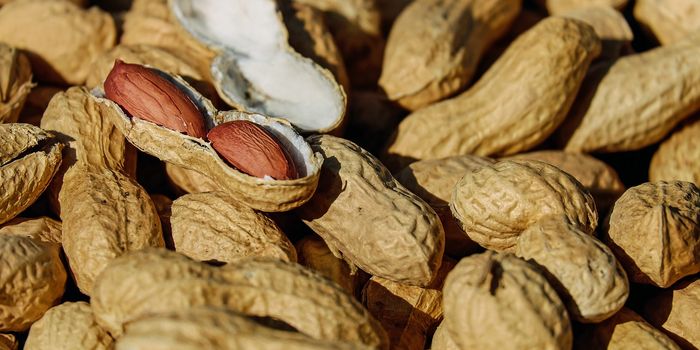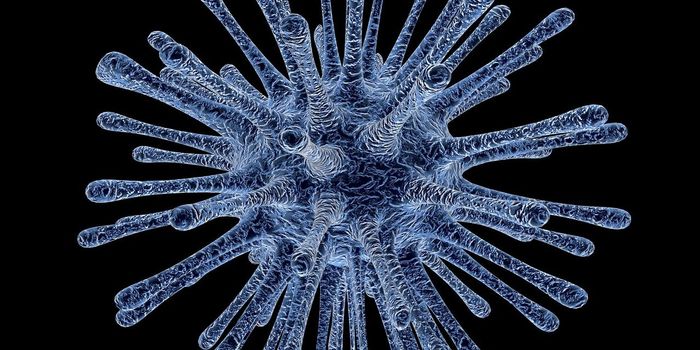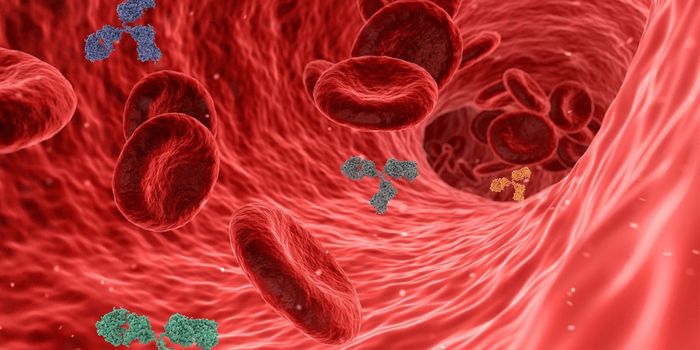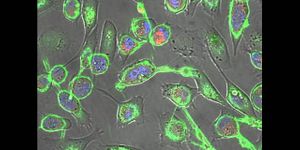Videos
Strangely beautiful
Trending
/
Immunology
/
Master of disguise: Parasite changes "costumes" to outsmart the immune system
MAR 27, 2015 11:03 AM PDT
Share
Master of disguise: Parasite changes "costumes" to outsmart the immune system
 A team at Rockefeller University tracked the appearance and disappearance of protein coats within the blood of mice infected by Trypanosoma brucei. They found an unexpected diversity in disguises presented by the parasite at any one time and challenge the conventional understanding of the dynamics that allow the parasite to persist.
A team at Rockefeller University tracked the appearance and disappearance of protein coats within the blood of mice infected by Trypanosoma brucei. They found an unexpected diversity in disguises presented by the parasite at any one time and challenge the conventional understanding of the dynamics that allow the parasite to persist.Orchestrated costume changes such as these make it possible for microbes like T. brucei to evade the immune system, which would otherwise recognize them by the protein coats they wear. By taking a detailed look at how the parasite periodically assumes a new protein disguise during a long-term infection, new research at Rockefeller University challenges assumptions about one of the best-known examples of this strategy, called antigenic variation, in the parasite that causes African sleeping sickness.
T. brucei is spread by the Tsetse fly in rural Africa. It travels through the blood and across the blood-brain barrier to cause potentially fatal disease that disrupts circadian rhythms, hence the name sleeping sickness. T. brucei, like the malaria parasite and some other pathogens, relies on antigenic variation to stay one step ahead of their hosts' immune systems.
Many animals, including humans, have immune systems capable of learning to recognize pathogens based on those pathogens' antigens, usually proteins on their surface. After encountering an antigen, the immune system generates its own proteins called antibodies to target that antigen. By continually changing antigens, a pathogen evades those antibodies.
The study was published on March 27 in Science.
You May Also Like
JAN 06, 2025
Genetics & Genomics
Can a kind of genetic favoritism explain why some people carry disease-causing mutations, but do not have a disease?
Written By:
Carmen Leitch
JAN 23, 2025
Immunology
Food allergies have been on the rise over the last few decades. According to Food Allergy Research & Education (FARE
...
Written By:
Brian G. Morreale
JAN 28, 2025
Cancer
Human papillomavirus (HPV) encompasses over 200 viruses, many spreading through sexual contact. Twelve strains of
...
Written By:
Katie Kokolus
FEB 06, 2025
Immunology
The advent of vaccinations came when a scientist, by the name of Edward Jenner, discovered that an individual exposed to
...
Written By:
Brian G. Morreale
FEB 06, 2025
Immunology
A majority of patients with diabetes have type 2 diabetes. Specifically, more than 38 million Americans have diabetes an
...
Written By:
Brian G. Morreale
MAR 13, 2025
Cancer
A recent study published in JAMA Oncology presents promising new data on a treatment regimen beneficial to patients with
...
Written By:
Katie Kokolus
Loading Comments...








